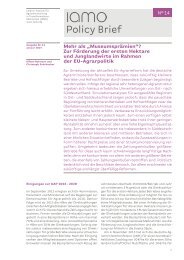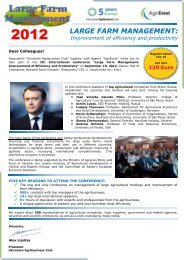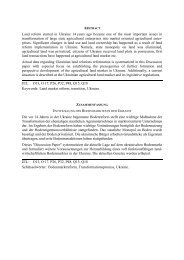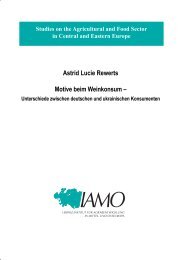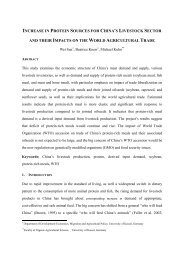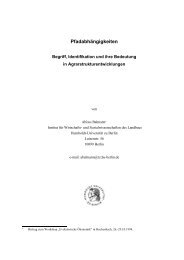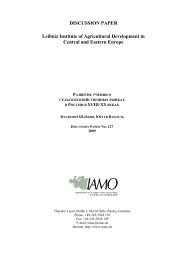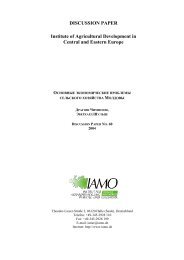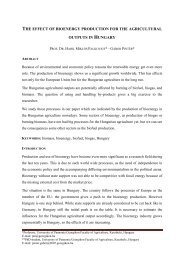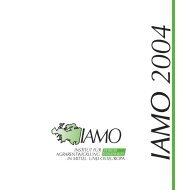Abstract - IAMO
Abstract - IAMO
Abstract - IAMO
Create successful ePaper yourself
Turn your PDF publications into a flip-book with our unique Google optimized e-Paper software.
18 ANDREAS WILDERMUTH<br />
6 A CONCEPTUAL FRAMEWORK FOR THE DESIGN OF SPECIFIC-RISK CROP INSURANCE<br />
The rejection of all-risk and multiple-peril crop insurance already implies a vindication of an<br />
important aspect of the Czech approach to crop insurance reform. Crop insurance should be of<br />
the specific-risk type, i.e. restrict coverage to a limited number of carefully selected natural<br />
hazards. This raises two questions:<br />
• What perils should be covered?<br />
• What is the role of the government? Should it leave crop insurance to the market or should<br />
it intervene? In the case of the latter, what form should intervention take?<br />
To answer these questions, one needs a conceptual framework for analysis. In the following<br />
we will propose such a framework. It is developed in the following way:<br />
Step 1: Analysis of risk-management at the farm level<br />
Step 2: Based on the results of step 1, derivation of a condition for the insurability of a<br />
particular natural hazard<br />
Step 3: Discussion of welfare implications<br />
Step 1: Analysis of risk-management at the level of the individual farm<br />
When a farm makes its production decision under uncertainty, it has to choose a riskmanagement<br />
strategy from the set of available risk-management strategies. This set contains<br />
risk-management strategies with and without crop insurance. For the purpose of our argument,<br />
we will assume that there is no subsidisation of crop insurance or any other risk-management<br />
tool. When choosing among the available risk-management strategies the farm has to perform<br />
an implicit or explicit assessment of the available risk-management strategies and choose the<br />
most favourable one. So the question arises: how should alternative risk-management<br />
strategies be evaluated? Or for the purpose of the economic policy adviser: how should a<br />
farm’s choice among risk-management strategies be modelled? To answer this question, we<br />
will use a simple model, which can be analysed in verbal terms.<br />
Assume that the farm’s decision-making behaviour is that of a risk-averse expected utility<br />
maximiser. Consider the income risk stemming from a natural hazard like drought (as<br />
experienced in 1998 in many Russian regions), which will henceforth be called yield risk. We<br />
shall assume that uninsurable income risk is stochastically independent of the yield risk so that<br />
the farm’s insurance decision can be separated from other risk-management decisions<br />
(SCHLESINGER and DOHERTY, 1986). This is a reasonable assumption for natural hazards in an<br />
environment with a high degree of market integration. 6 We shall also assume that the farm has<br />
the choice between two and only two risk-management strategies to deal with yield risk:<br />
• Crop insurance, which is assumed to be provided at a premium equalling the sum of the<br />
expected value of damages, the administrative cost loading and (if the insurer is risk<br />
averse) the insurer’s risk loading,<br />
• An alternative self-insurance technology without crop insurance whose adoption is<br />
assumed to lead to a deterioration of expected income.<br />
6 If the assumption of stochastic independence is dropped, it is no longer possible to consider the insurance<br />
decision in isolation. Instead, the demand for insurance is determined simultaneously with other riskmanagement<br />
decisions (MAYERS and SMITH 1983).



